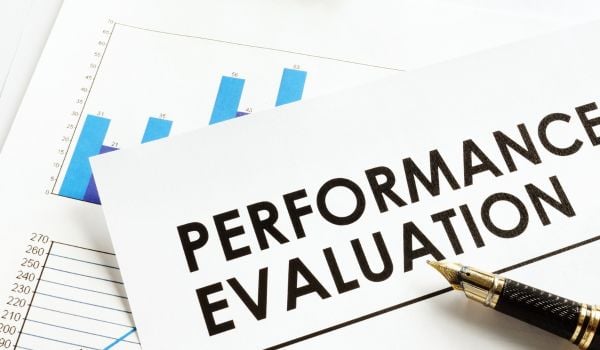A water softener shouldn’t be noisy — so if yours is running constantly, there’s likely a problem with the regeneration cycle.
Whether it’s stuck in backwash mode or struggling to draw brine, the fix could be simple — or a little more technical. The good news? Most issues can be diagnosed (and often fixed) without calling a plumber.
Let’s walk through what might be going wrong — and how to get your softener back to normal.
⚡ Quick Takeaways:
- 🧠 Check the timer and settings — make sure it’s not stuck
- 🔌 Confirm the unit has power and isn’t glitching
- 🚰 Inspect the brine tank and float for clogs or salt buildup
- 🧼 Clean the injector valve if there’s no brine draw
- 💧 Make sure your home’s water pressure is steady
- 🔄 Test the bypass valve and check for stuck regen cycles
- 🧰 If issues persist, a reset or pro service may be needed
⏱️ When Should You Hear it Run?

For the most part, water softeners are silent. The only time you should hear them is during regeneration — that’s when the system flushes minerals and recharges the resin with saltwater.
It usually happens in the middle of the night and only lasts 2–3 hours.
💡 What you might hear:
- A light whooshing or gurgling as water moves through the system
- A slurping sound during brine draw
- Water draining through a hose or pipe
If you’re hearing those sounds all day or constantly, something’s not right — and that’s when it’s time to start troubleshooting.
🔁 How Often Should It Regenerate?

A well-sized softener typically regenerates every 2–3 days, depending on your water hardness and daily usage.
Most systems are set to cycle overnight, when demand is low — and the process should only last a couple of hours.
🧠 If it’s regenerating more often than that, something might be off with:
- The settings (salt dose or hardness level)
- Your household water use (think guests or laundry overload)
- Or even a leak that’s drawing extra water
Want a deeper dive into how regeneration works?
👉 Check out our full water softener regeneration guide.
If it’s regenerating nonstop, it’s time to dig deeper — we’ll walk through the most common causes next.
⚠️ Why It Keeps Running

If your water softener won’t stop regenerating, here are the most common reasons — grouped for easier troubleshooting:
🔧 Settings & Usage Issues:
- Incorrect programming – Salt dose or hardness level may be set too high
- Power outage reset – Timer might have reverted to factory defaults
- Increased water usage – Extra showers, laundry, or guests can trigger more cycles
- Hidden leaks – A running toilet or outdoor spigot may be drawing water continuously
- Improper setup – If this is a recent install, revisit your water softener setup steps to ensure settings and lines were configured correctly
🧂 Brine Tank Problems:
- Salt bridge – A crust forms over the water, blocking proper brine draw
- Salt mushing – Undissolved salt settles at the bottom and clogs the float
- Clogged float or valve – Prevents the correct amount of water from entering the tank
💧 Water Flow Issues:
- Clogged injector (Venturi valve) – Prevents brine from reaching the resin tank
- Low water pressure – Anything below 40 PSI can stop regeneration from completing
- Clogged resin bed – Especially in areas with high iron or no sediment prefilter
- Blocked brine or drain lines – Kinks or obstructions will halt normal cycling
🧠 Equipment Failures:
Undersized softener – The system can’t keep up with your household’s water needs
Faulty rotor position switch – System can’t detect where it is in the cycle
Control head failure – A broken timer or circuit board can keep it stuck in regen
🧰 How to Troubleshoot a Stuck Softener

If your water softener sounds like it’s regenerating nonstop, here’s a smart step-by-step way to track down the problem — no guessing required:
🛠️ What You’ll Need:
- A clean towel and bucket (just in case)
- Owner’s manual (for model-specific instructions)
- Flashlight
- Optional: TDS meter (for testing water softness)
🔍 Step-by-Step:
| 🔧 Step | What To Do |
|---|---|
| 🔎 1. Check Water Usage | Look at recent bills or think about extra guests, appliance use, or hidden leaks. |
| 🧪 2. Test TDS | Use a TDS meter to check for hard water. High readings mean the softener isn’t working properly. |
| 🔌 3. Confirm Power | Make sure the softener is plugged in and the display isn’t blank or flashing error codes. |
| ⚙️ 4. Review Control Head Settings | Check for salt dose, hardness level, or reset timers — especially after a power outage. |
| 🧂 5. Inspect Brine Tank | Look for a salt bridge or salt mushing that may be blocking water flow inside the tank. |
| 🚫 6. Activate Bypass Mode | Stop water flow to the system using the bypass valve so you can safely inspect components. |
| 🧼 7. Clean the Float Valve | Remove and scrub the float assembly. Built-up salt or sludge here can cause endless regen cycles. |
| 🧰 8. Clear the Injector Valve | Take out the venturi valve and clean away any buildup, then test by running a manual cycle. |
| 📞 9. Still Stuck? | If the system keeps running or draining, shut it off or leave it in bypass mode and call a professional. |
📞 When to Call a Pro

Most softener issues can be fixed with a bit of patience and a few tools. But sometimes, it’s just not worth the time or risk — especially if electrical components or water quality are involved.
Here are some signs it’s time to bring in a technician:
- ⚠️ Sudden change in water quality – Hard water returns or your water tastes off
- 🟤 Brown or discolored water – May indicate rust, sediment, or prefilter failure
- 🚱 No brine draw – Even after clearing blockages, brine still isn’t reaching the resin tank
- 💥 Electrical issues – Power surges or error codes that won’t clear
- 🚿 Hard water despite cycling – If your system’s running constantly but not softening
- 🔄 Stuck in regen after everything else checks out – May point to a failed rotor switch or control board
💡 Helpful to know: Calling a pro may cost a little upfront, but it can save you time, prevent bigger problems, and keep your system running safely.
🧠 Final Thoughts
If your water softener won’t stop running, you’re not alone — and it doesn’t always mean something major is broken.
From salt bridges to simple valve cleanings, many fixes are quick, easy, and totally DIY-friendly. But if your system is older, oversized for your needs, or constantly acting up, it might be time to consider an upgrade.
👉 You can compare the latest water softeners here if your current setup is no longer pulling its weight.
Whether you troubleshoot it yourself or bring in a pro, the sooner you solve it, the better — because every extra day of hard water means more limescale, more cleaning, and more wear on your home.
 125 people found this helpful. Was this guide helpful to you?
125 people found this helpful. Was this guide helpful to you? 

